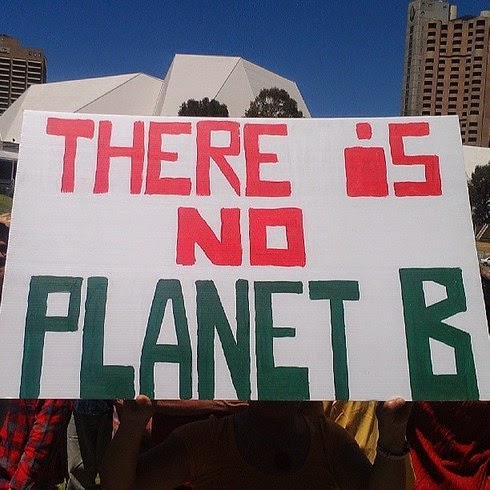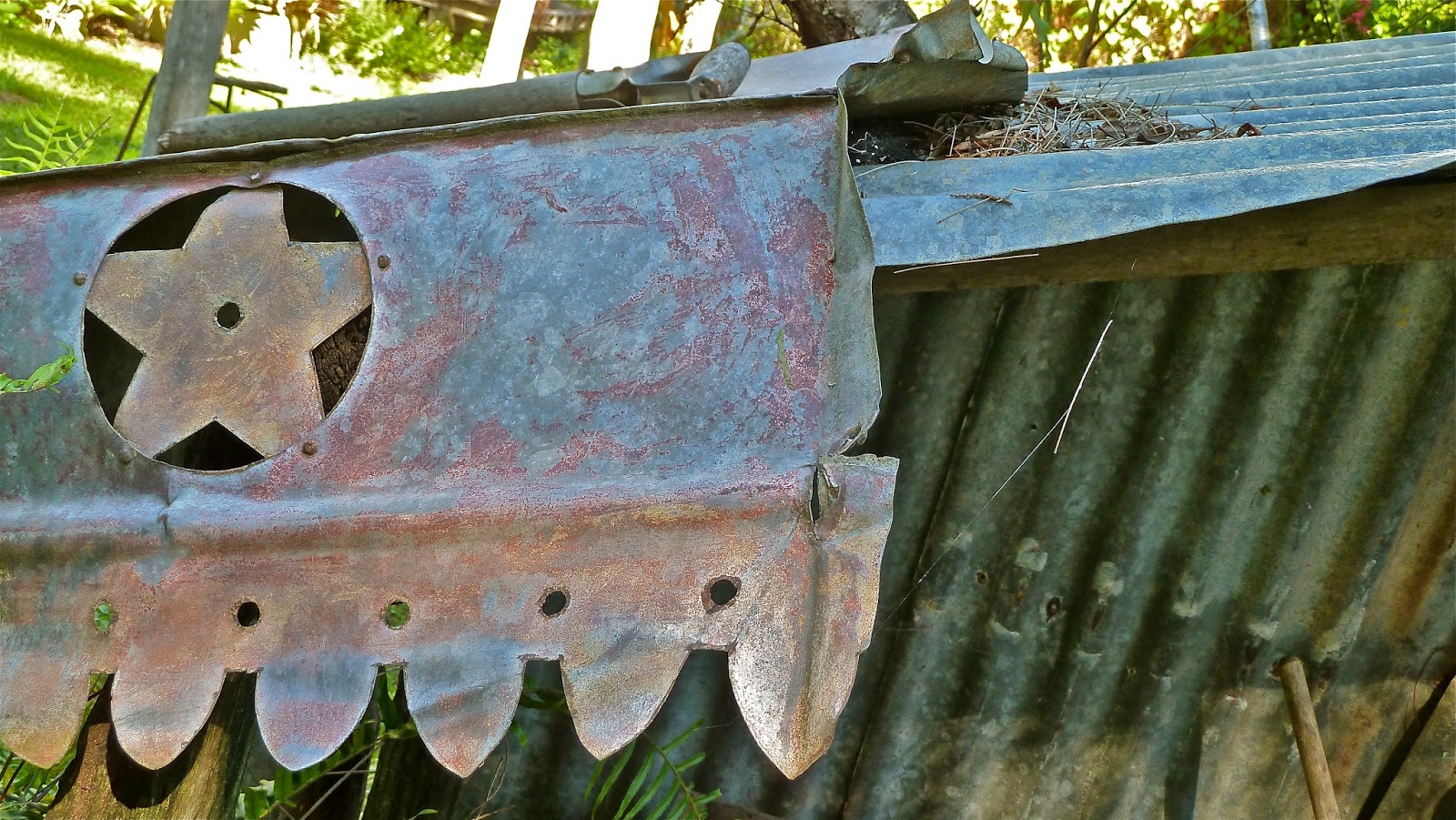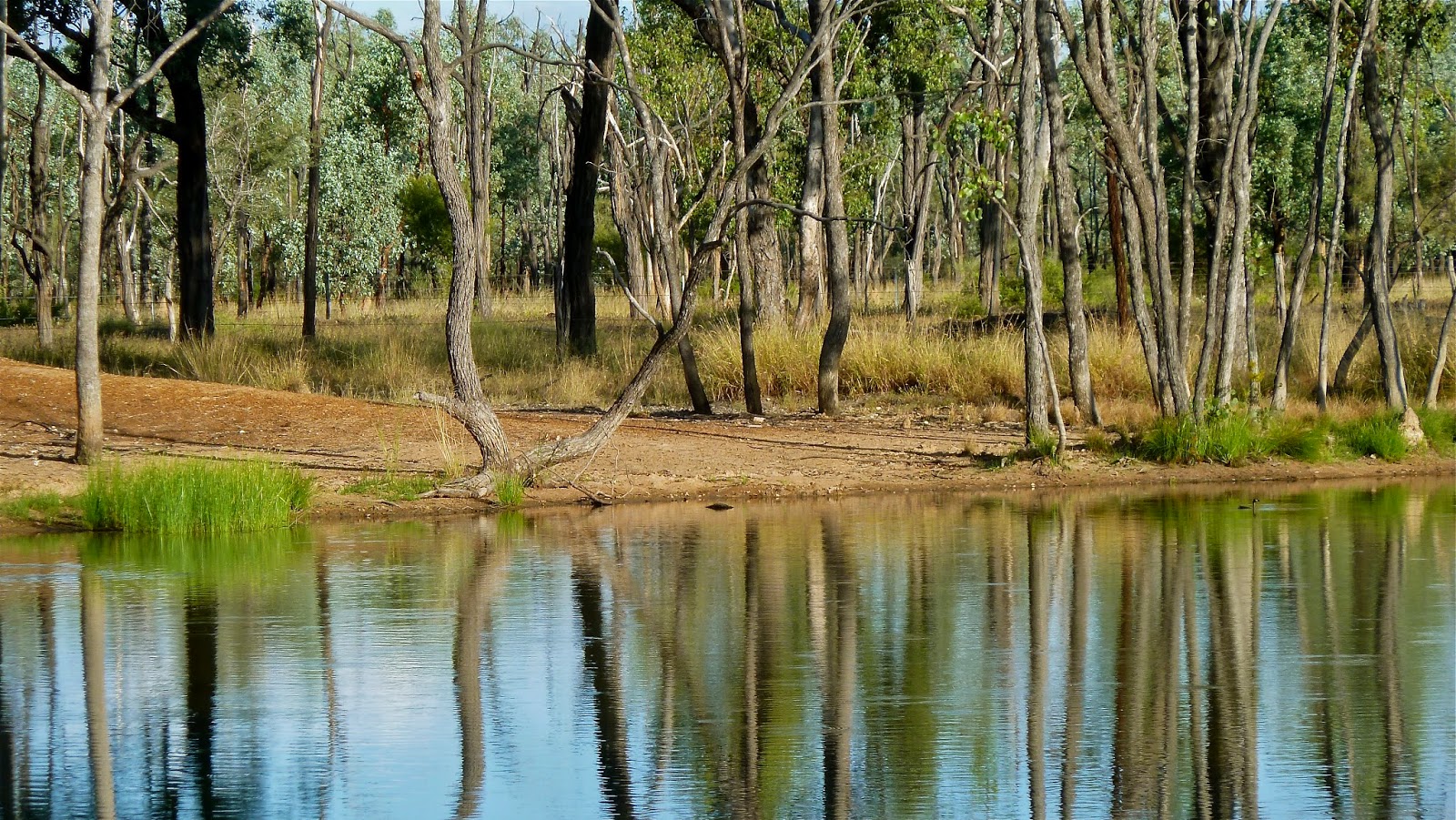The NSW government had considered it necessary to use – reports varied but essentially – 800 regular police, possibly including riot units, to disperse potentially thousands of extremely well organised and absolutely non-violent protectors. An equally efficient social media back-up network would have broadcast to the world in minutes the kind of image that would not have improved Australia's already sullied global reputation. The ABC have an interesting take on the cancellation of Operation Stapler*.
Possibly the best news at the end of the week came from Deutsche Bank's AGM in Frankfurt. The bank will not be considering investment in port expansion at Abbot Point while there is no consensus between the Australian Federal Government and UNESCO about the risk of further development damaging the fragile ecosystem of the Great Barrier Reef. Deutsche Bank's announcement followed intense lobbying by environmental groups and their supporters' networks worldwide.
The day after that, HSBC at its AGM, described the likelihood of its further financing of projects close to the GBR as 'extraordinarily unlikely'. Activists were less successful in persuading French Bank Société Générale not to get on board with Gina Rinehart and GVK, although Crédit Agricole preceded Deutsche Bank in announcing ESG (environmental, social and governance) risks in its investment management.
Queensland Resources Council** Chief Executive Michael Roche provided a rather churlish addendum to the jubilation at Deutsche Bank's decision.
The anti-mining activists seem to have a lot of money to travel the world to put lies and distortions in front of institutions. I would like to think the activist groups, with all this money to be swanning around Paris, Frankfurt and London... would put their member's [sic] hard-earned donations into proper research to eradicate the real threats to the Reef such as the Crown-of-Thorns Starfish.Mr Roche's comments are typical of the increasingly knee-jerk and not-always-accurate reaction of mining companies, their lobbyists and investors as the writing on the wall for coal becomes ever more luminous.
In 2012, Crédit Suisse calculated that the resources industry was at the greatest risk from negative share price valuation on the ASX (Australian Securities Exchange) as a result of environmental, social and governance impacts. A new study involving the University of Queensland – and reported by Mining Australia† – has shown that 'company-community conflict' is now costing miners billions of dollars. Conflict can be translated into business costs and has become a major component of project costings. Dr Daniel Franks of UQ's Centre for Social Responsibility in Mining explains:
There is a popular misconception that local communities are powerless in the face of large corporations and governments. Our findings show that community mobilisation can be very effective at raising the costs to companies.Delaying tactics are currently a powerful tool in the hands of environmental activists trying to stall the approvals of mega mines in the Galilee Basin, for example, or halt the start-up of projects already green-lit such as at Maules Creek. For a major mining project with a huge capital expenditure, the study shows that up to US$20 million a week may be lost.
This month, ABC Rural reported that the Minerals Council of Australia estimates 10,000 lost jobs in coal mining in the last two years, during which time prices for thermal and coking coal (used in steel manufacture) have fallen by between 50 and 70 per cent. In the meantime, the Queensland government has approved Adani's proposal for Australia's largest mine ever – Carmichael in the Galilee Basin. The stats are enough to make your eyes water: the mine will measure 25 kilometres by 12, or 28,000 hectares; it will produce 120 million tonnes of carbon every year, four times New Zealand's fossil fuel emissions; it will use 12 billion litres of water a year; and its development will put at risk 60 'at risk' species. Do investors in this monster really want to lose their shirts?
During the transition from a fossil-fueled, growth-obsessed economy to a sustainable, renewable-energy-powered, climate-focused action plan, there will be many different takes on what is happening and what should happen, depending on where the protagonist is standing. A research company working for the Minerals Council has just advised that professional investors are 'resistant to anti-coal rhetoric and still wedded to their standard data-based analysis of coal as an asset class'. They conclude that coal's current under-performance is not being influenced by the divestment campaign but is cyclical. Heard that before?
Their figures – reported in the Australian Financial Review – are open to different interpretations. Having surveyed 1000 Australians, the research company found 67 per cent were unaware of the divestment campaign; 13 per cent were aware but didn't plan any action; 17 might act in the future; and 4 per cent were planning to divest. Apart from the fact that the numbers don't add up to 100, they show that 21 per cent of interviewees are either divesting or considering it. Not a bad start to the campaign, you could argue, especially if you consider that the likes of Stanford University and Deutsche Bank have joined the 'anti-coal collective'.
Today would have been the 107th birthday of Rachel Carson, an American marine biologist and conservationist who, with the publication of her book Silent Spring, in 1962, inspired a global grassroots interest in environmentalism. Carson's impact was summed up two decades later by environmental engineer and academic H Patricia Hynes:
Silent Spring altered the balance of power in the world. No one since would be able to sell pollution as the necessary underside of progress so easily or uncritically.* http://www.abc.net.au/news/2014-05-27/metgasco-casualties/5479900
** an NGO representing the interests of companies engaged in the exploration, mining and processing of minerals
































































